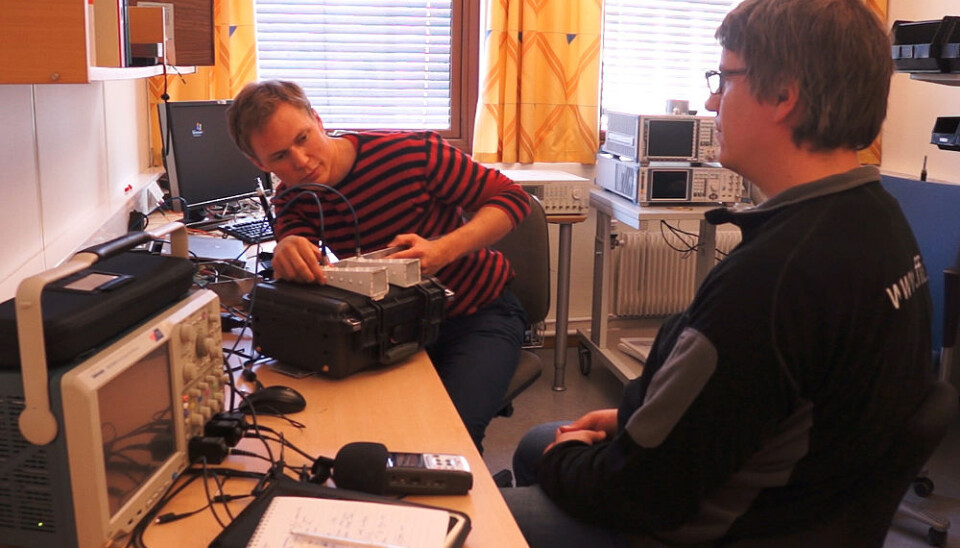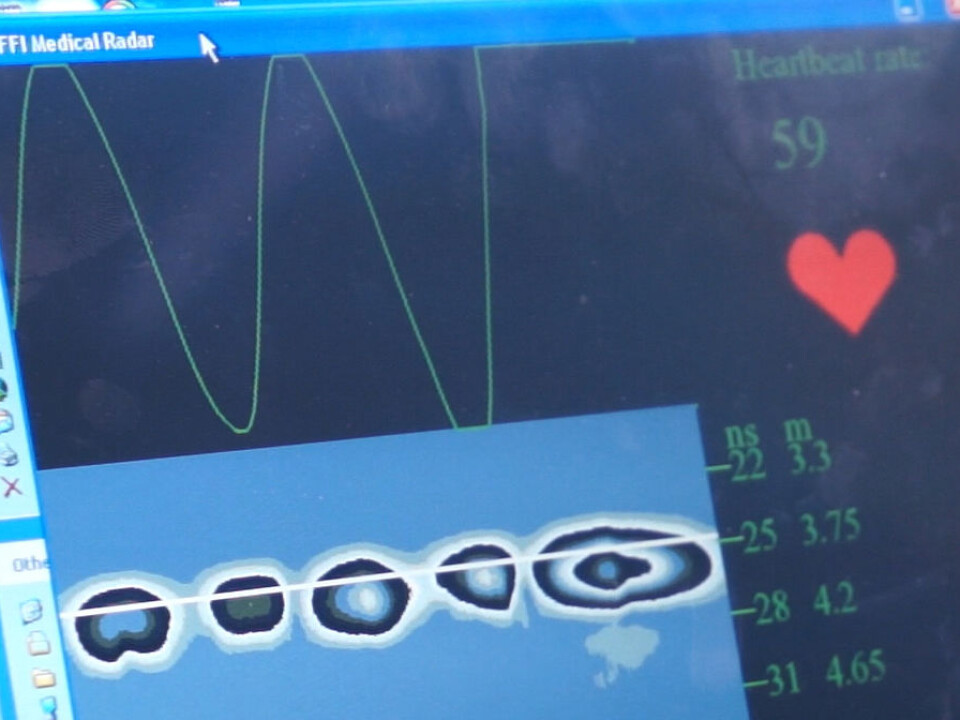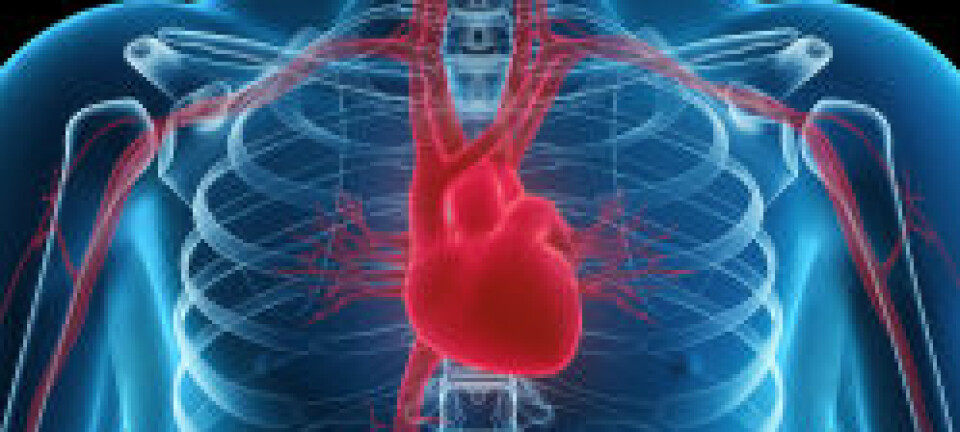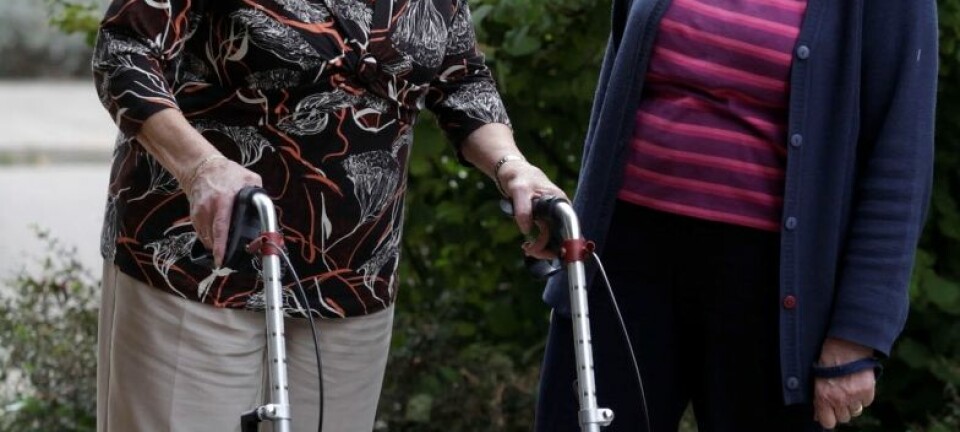
Radar detects heartbeats
Advanced software sees heartbeats through the skin as well as enemies through walls.
Denne artikkelen er over ti år gammel og kan inneholde utdatert informasjon.
Øyvind Aardal points at the computer screen. White spots march across his PC monitor at the Norwegian Defence Research Establishment (FFI). Someone has entered the room next door.
But it isn’t the enemy we see. Aardal’s colleague Mats Jørgen Øyan has walked into a demonstration that Aardal had rigged up.
Radar in war and peace
Aardal and his colleagues have written a program that enables a small, easy-to-carry radar device to "see" through walls. Soldiers could carry the device with them and spot people hiding in buildings.
But the radar can also be used in a different battle zone, one where doctors and nurses fight to save the lives of patients.

“A radar unit in a mattress could monitor respiration and pulse. It can replace electrodes that have to be attached to the body,” says Aardal.
The radar is easier to use and gentler than an electrocardiogram. This is important for patients who are particularly vulnerable, such as premature babies and burn victims.
Looks like an old car horn
Mats Jørgen Øyan now gets to play the role of a heart patient in the demonstration. Aardal aims the radar antennas at him. They look like squared-off cones, like old car horns or sirens.
But they don’t emit any sound. They transmit electromagnetic waves with a short wavelength, just a few centimetres, which puts them in the range of radar waves.

Aardal has figured out how to transmit these radar waves so he gets the best possible results. Both the wavelength and the shape of the waves are important. The angle of the target makes a difference, too.
Blinking heart
The electromagnetic waves pass right through Øyan’s shirt. They hit his chest and reflect off it like the echo of sound off a wall. This is a radar echo.
The echo is detected by an antenna and relayed to a computer. This is where Aardal’s software comes in.
It extracts information from the motion of the radar echo. After a few seconds a red heart symbol starts blinking on the screen. Øyan’s pulse rate lights up as a green number.
Three theories

“When I started working on my doctorate it was well known that a pulse could be seen as a radar echo from a body. But scientists hadn’t explained why,” recalls Aardal.
There were three hypotheses. One was that the heart itself sent back the echo. Another was that the pulse of arterial blood caused tiny changes in the amount of blood close to the skin, changes that could be detected by the radar echo.
The third theory was that the heartbeats resulted in small movements under the skin, and that the radar was able to detect them.
A table and an antenna
It took a while to figure out which theory was correct. Aardal used himself as a guinea pig.
“I lay down on a table with an antenna over me. In one test I had a sheet of Plexiglas over my chest. That stopped all skin movements,” he says.
If the echo of his heartbeat disappeared, then the researchers would know that the movement caused by the heart under the skin was the cause. And that is what happened. But Aardal needed to be sure.
Metal foil and a shaved chest
“In another test I covered my chest in metal foil. That kept the radar signals from penetrating my body. If the heartbeats could still be detected, then tiny skin movements had to be the answer,” says Aardal.
The results were once again positive. So, teeny weeny motions of the skin were what enabled the radar to detect heartbeats.
Aardal thought the tests were amusing.
“I never thought I’d have to shave my chest as part of my job,” says Aardal. “After all, I’m a theoretician!”
-----------------------------
Read the Norwegian version of this article at forskning.no
Translated by: Glenn Ostling

































